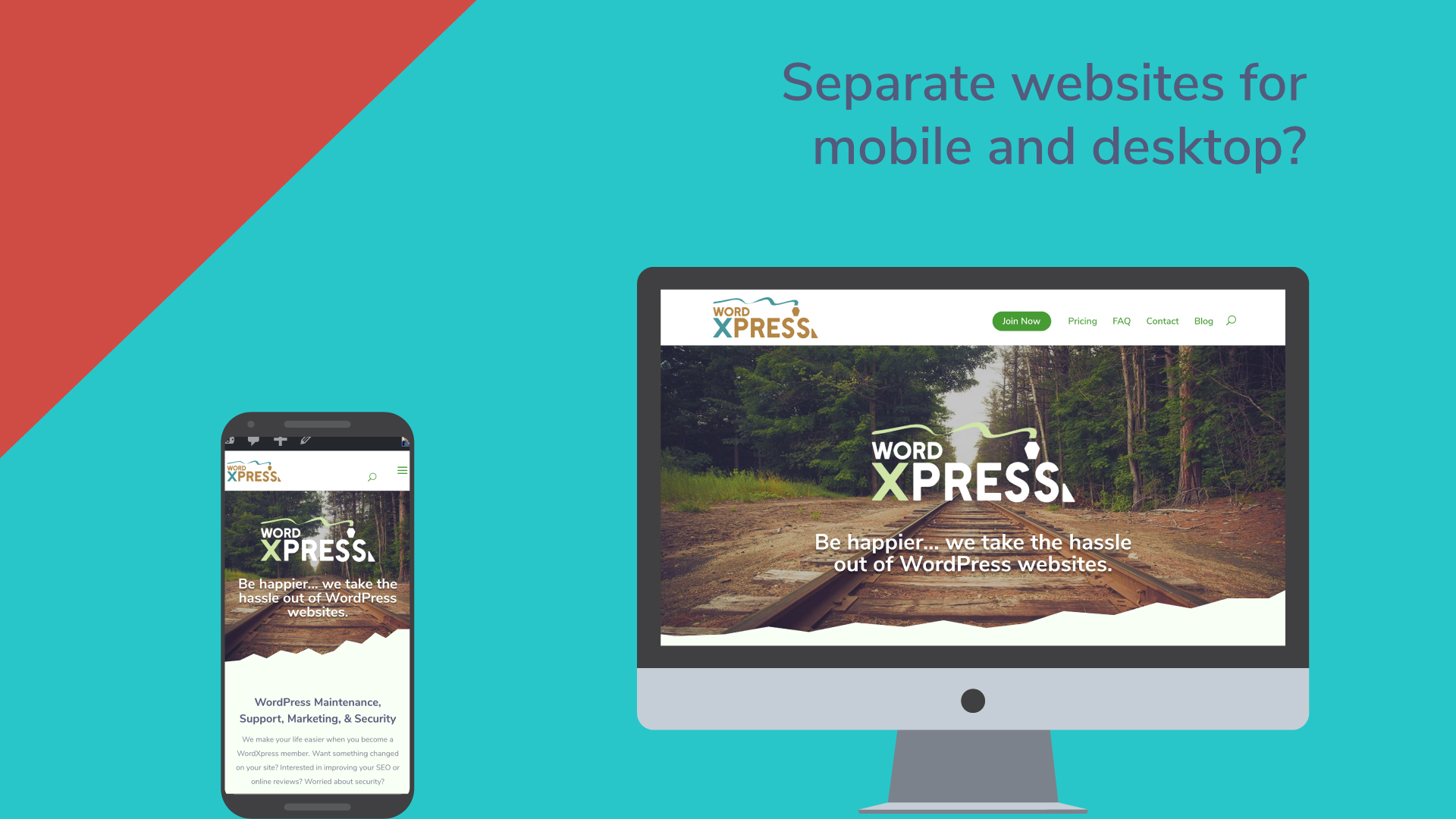This is one of hundreds of videos that I make to answer the most commonly asked questions related to small business design.
Today’s question is, “Do I need a desktop website and a mobile website?” This is an important question that reflects the evolution of web design and user behavior over the past decade. A few years ago, it was essential to have separate websites for desktop and mobile users, as the user experience on smaller screens could be challenging. However, today, having two separate websites can actually harm your online presence more than help.
Desktop and Mobile Website Debate Matters for Your Business
When you have both a desktop website and a mobile website, Google sees these as two different entities. This can create confusion in terms of search engine optimization (SEO). Google may struggle to determine which site should rank higher in search results. As a result, you could inadvertently create a competitor for your own business. Instead, the best practice is to opt for a responsive website design.
A responsive website adapts seamlessly to various screen sizes, providing an optimal viewing experience whether users are on a desktop, tablet, or smartphone. This approach not only enhances usability but also improves your website’s performance in search engine rankings. Most reputable web designers and developers are well-versed in creating responsive websites that function effectively across devices.
The functionality of a responsive website means that when someone visits your site on a desktop, it displays beautifully on the larger screen. If that same user accesses your site on an iPad or an Android phone, the design adjusts to fit the device without compromising on quality. This adaptability is crucial, especially considering that many users browse the internet on mobile devices today.
In fact, statistics show that a significant percentage of web traffic now comes from mobile devices. Users expect websites to load quickly and provide a smooth experience, regardless of the device they’re using. If your website isn’t mobile-friendly, you risk losing potential customers to competitors with better-optimized sites.
Moreover, having a single responsive website simplifies content management. Instead of maintaining two separate sites, you can focus your efforts on one platform. This means any updates or changes you make will be reflected across all devices, saving you time and reducing the likelihood of inconsistencies.
Responsive design also positively impacts your SEO strategy. Search engines prefer responsive websites because they provide a better user experience. When your website is mobile-friendly, it’s more likely to rank higher in search results, leading to increased visibility and traffic. Google has even implemented algorithms that prioritize mobile-friendly sites in its search rankings, making it essential for your website to adapt to this trend.
Another significant advantage of having a responsive website is that it improves your site’s loading speed. A mobile-optimized site loads faster, enhancing user experience and reducing bounce rates. When users have to wait too long for a website to load, they are likely to abandon the page and seek information elsewhere. This not only affects your potential sales but can also hurt your overall online reputation.
While you might still come across some outdated advice suggesting that separate desktop and mobile websites are necessary, it’s essential to understand that the web landscape has shifted dramatically. Users are increasingly accessing the internet through various devices, and your website must be prepared to meet their needs.
If you’re unsure whether your current website is responsive, consider testing it on different devices. Check how well it adapts to various screen sizes and whether the user experience remains consistent. If you find that your website isn’t performing optimally, it might be time to consult with a web designer who specializes in responsive design.
In conclusion, the answer to whether you need a desktop and mobile website is a resounding no. Instead, invest in a responsive website that will provide a seamless experience for all users, regardless of the device they choose to use. This approach not only enhances user satisfaction but also boosts your SEO performance, making it a smart investment for your business’s online success.
Ultimately, the goal is to create a website that effectively serves your audience’s needs, making it easy for them to navigate and interact with your content. By prioritizing responsive design, you’re taking a significant step toward achieving this goal and ensuring the longevity and success of your online presence.
Your designer doesn’t know what we are talking about?
Here at wpXPRESS, we help people with their WordPress websites and complicated stuff like making it mobile-friendly. We’d love to help you on that. All you need to do is sign up for one of our membership plans, and we’ll handle all kinds of technical stuff on your website, for you.





0 Comments